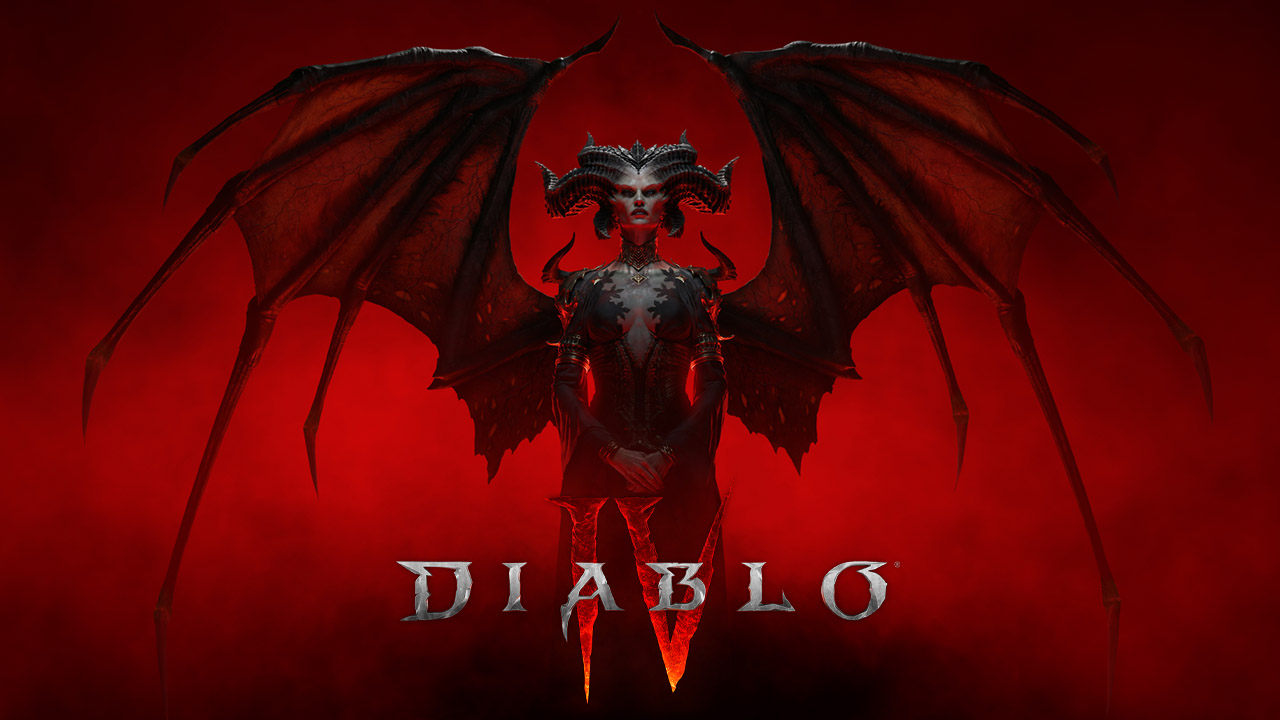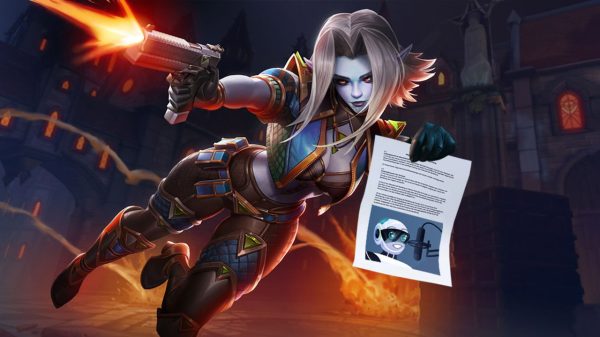A lot of companies have a keystone franchise – an IP that seems to be evergreen, and always profitable. Sure, questionable decisions and the odd flub may lessen its lucrativeness; but it’s rare to see these industry titans outright vanish into irrelevance. Of this short list of instantly recognisable series, there exists an even smaller group of faces that serve as a Mt. Rushmore of gaming properties that have managed to define (and even initially establish) genres that many take as gospel in the modern day. Of these, there is no doubt that Diablo is one such industry icon.
Since Diablo II, the action-role-playing-hack-and-slash experience has been defined by this devilish deity. A comfort food for many, both Diablo II and Diablo III achieved the god-tier status of remaining installed on hard drives across gaming generations, always within reach when you need something familiar and reliable. Even the rocky start of Diablo III was quickly forgotten with how hard Blizzard worked to fix the growing pains of their favoured child. So where in the hell (heh) does that leave fans of the fiery franchise?
Diablo IV has a veritable tome of lessons to learn from, freeing up the development team to perhaps make new mistakes – but really, I have to be clear in saying that it does everything right in regards to staying true to its roots as a fast-paced, loot-driven action RPG. The combat feels weighty and satisfying, with each swing of your weapon and blast of magic having a real impact. The skill system has been revamped in a way that bafflingly found a gorgeous middle ground between Diablo II’s skill trees and Diablo III’s runic modifier system – allowing you to fine-tune elements of your build towards maybe adding some utility, or just heaping fistfuls of damage on top of your generous feast of fisticuffs. Wreck shit the way you want, how you want.
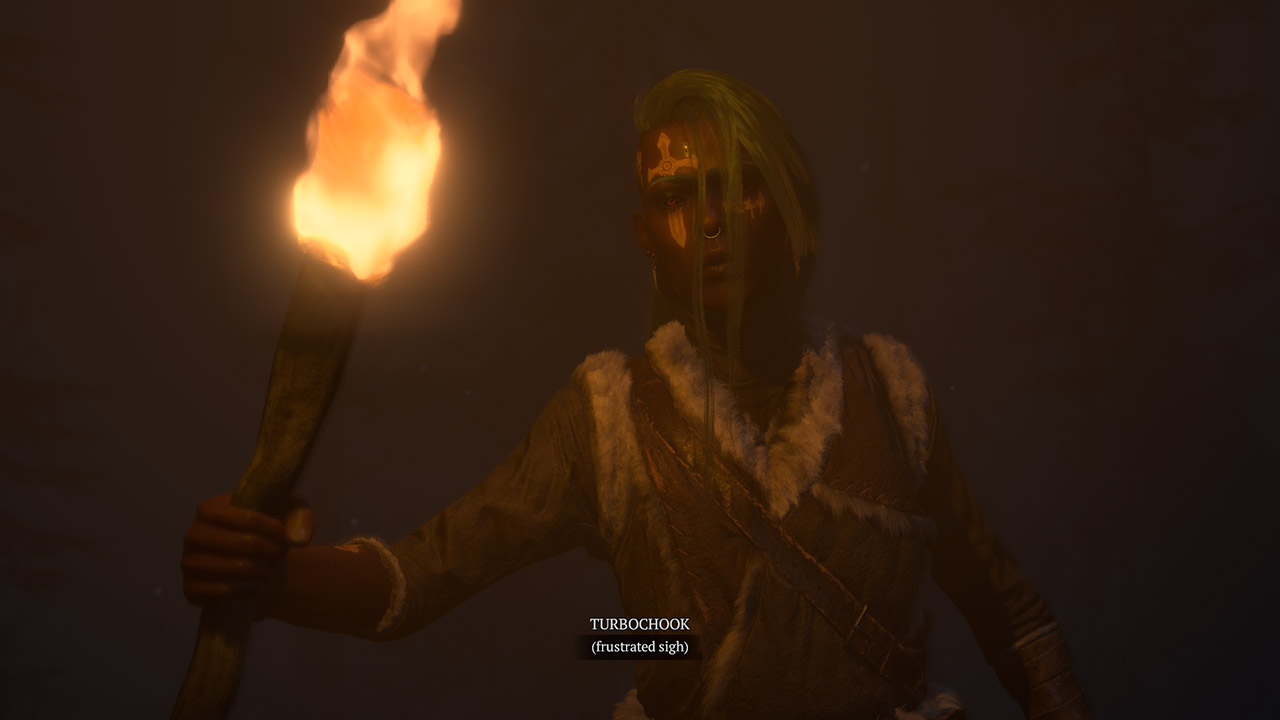
The native hen lurks in the dark
My gameplay experience differed greatly between my main choices of Necromancer and Druid, with a clear power curve differential that may be a little hard to process for some. Stepping foot into the game at a higher world tier meant I was accepting a higher challenge – but the initial comparisons felt massive. My Necromancer started strong and then had incremental power shifts, mostly surrounding gear changes and clever ability choice – compared to my burly bear man, who felt like a newborn learning to walk. Once his great furry legs found their stride, I was amazed at how much punishment I could take – and how much I could dole out. But there was absolutely a tooth cutting period where I wondered what the fuck I was doing wrong.
It came to reason that the power curve and fantasy of each class is far more deliberate than I had expected. My brain had clearly been dulled from years of playing MMO titles, where each class should have some parity in progression right from the second you choose a name for them – but Diablo IV is a great deal more than an MMO in ARPG clothing. I took both the Sorcerer and the Rogue out for a spin to confirm my findings, once more discovering that a few hours across both had revealed again that every class is its own wholly unique journey in far more than just playstyle. My impressive Necromancer start was put to pale as the initial power level of the Rogue felt brutally intoxicating. By level 24, my ranged build was an impressive volley of perforating bolts that shredded demon dudes easily – I didn’t even need a posse of skelebros protecting me.
This depth of mechanical design is a driving point of elevation across Diablo IV’s core – an enthusiastic and passionate design philosophy that is clearly targeting a gameplay experience that should be rich and varied for all players. It’s the very soul of what makes Diablo games so treasured by all – your moment-to-moment has been curated in a very careful way, but you still feel entirely in control. It’s wizardry. It’s voodoo. It’s awesome.
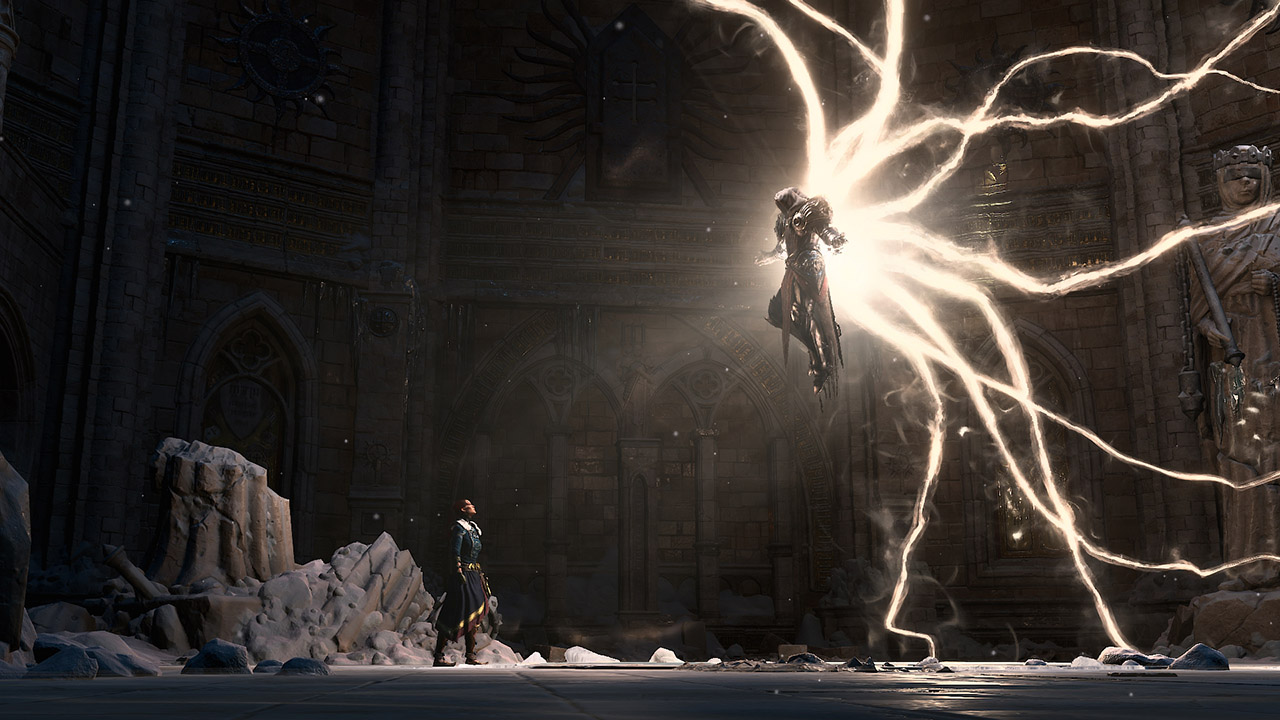
Putting the ‘high’ in ‘high and mighty’
You will explode from this cocoon of safety once you hit the endgame and emerge as a delicate butterfly in the post-narrative world. The sliding scale of Diablo difficulty returns, now with a slightly more formulaic method to boosting both the danger of the world and the treasures within. Risk and reward happily link hands and beckon you with the postgame experience, with areas of the world now offering unique treasures to those that have the fortitude to survive them – and if you are struggling, look deeper into the Paragon progression and its boards upon boards of glyphs and nodes to make sure your path is the correct one.
Dungeons and their unique modifiers are a tried-and-true method of fossicking for gear, and while I enjoyed the concept, I did find myself oddly nostalgic for the Rifts of old. That is not to say there is readily any issue to be had with the dungeons – their layout and enemies have all been crafted specifically to give a particular experience that is familiar to any who have completed them previously. They also offer a unique opportunity to rise to a less familiar challenge that now resides within – it was just neat to blast across a detached, randomly generated tileset, y’know?
The gear you find is every bit as dopamine inducing as you might expect, especially when those special colours shoot a beam of happiness up into the sky. There has been a little bit of a wiggle to what you might expect from certain colours nowadays, but in practice this has done a lot to keep things rewarding at all levels of difficulty. Being able to rapidly boost or even try new skills on gear pieces is fantastically enjoyable, allowing me to change my build in the field to solve a problem on more than one occasion – and having a dedicated UI window that clues me in to my current skills across both learned and ‘borrowed’ options was really neat. I am sure everyone who plays Diablo IV will remember their first “Unique Quality” item drop, taking in the lines of text and the incredible power spike on offer.
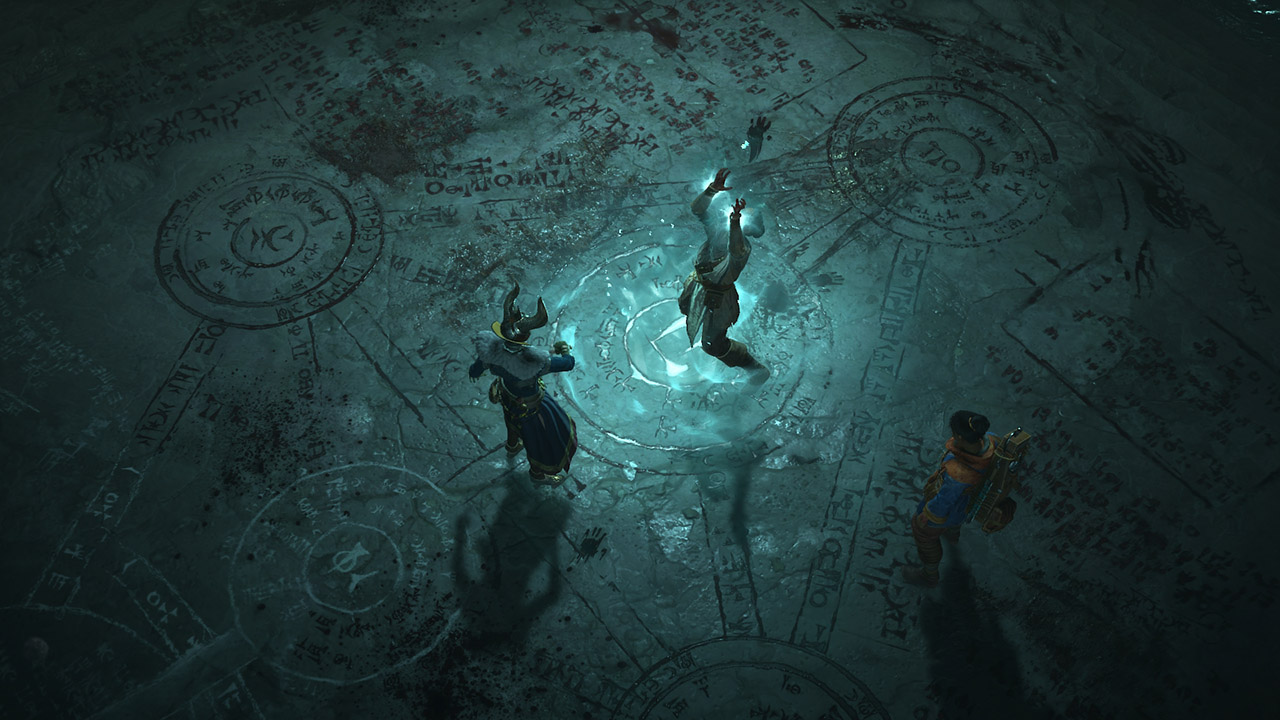
Your companions pull the narrative in fascinating and dark directions
Visually, Diablo IV sets a new standard for the series – an arguably low bar to cross. I have no real beef with Diablo III’s visual style, but that game showed its age the day of its release. Here we have a robust engine churning out a graphical style that is nothing short of breathtaking, showcasing stunning environments that are both eerie and captivating. From desolate, moonlit moors to decaying gothic cities, each location is brimming with intricate details that reek of implied narrative. The art direction is masterfully executed, with a perfect blend of darkness and beauty that keeps you engaged and curious about what lies ahead – easily the largest percentage of random exploration on my part came from clues within the landscape that beckoned to me. The lighting and atmospheric effects deserve special mention, as they contribute immensely to the game’s immersion. The play of light and shadow – the flickering torches casting haunting glows, and the ethereal mist that shrouds all manner of ancient ruins all combine to create an otherworldly ambiance that serves a testament to the developers’ commitment to creating a darkly enchanting world.
This all comes to a head within the real-time cutscenes. Tasked with telling the grim narrative at play, I was initially concerned that we’d be losing some of Blizzard’s best work, as its rendered cutscenes are undeniably incredible. However, they end up looking intensely gorgeous and put a spotlight on both the incredible work done by the development team in making the games’ engine as flexible as it is, and the animation department that has brought it all to life. It’s just a shame that the game is locked to display them at 30fps, with a noticeable stutter when they kick off – causing me to pour over my in-game settings to see what the problem might be. I sincerely hope this is addressed, because the real strength of running cutscenes in-engine is being able to utilise the full power of your platform – let me cook, damn it.
Bloated bodies wobble and strain against their bindings, skittering bug men clack segmented limbs across the floor – the things that come charging out of the dark are ever a treat and oh-so fun to clobber
Then you have the inhabitants of this twisted realm, with the denizens of Diablo IV once again being cast in the starring role of this blood-soaked horror show. Everyone has their favourite goon from the Diablo series, and Diablo IV manages to revisit so many old favourites, while also still managing to crank out a plethora of new twisted and grotesque demons to slap upside the face. Bloated bodies wobble and strain against their bindings, skittering bug men clack segmented limbs across the floor – the things that come charging out of the dark are ever a treat and oh-so fun to clobber. The shining star of these cretins are the smooth and fluid animations that define them, with ragdolls carefully put together to make sure that scattering a gang of ghouls off a bridge and into the chilling water below looks precisely as epic as you’d hope it to.
This sense of wonder is quickly replaced with fear and awe when the game pits you against a colossal enemy, either out in the open world as a unique multiplayer challenge or toe to toe with one of the many narrative gatekeepers. Boss fights are intrinsically tied to their environments, with hazards manifesting from surrounding doodads – putting your dodge button to the test. Special praise needs to be given to the developer’s choice to segment healthbars as a way to communicate moments of respite (hitting a milestone health change will cause monsters to fart out some health potions) and to warn you of mechanics yet to come. This created a rhythm to some fights where you would realise that a particular attack may soon start looming, so you could better manage cooldowns in anticipation.
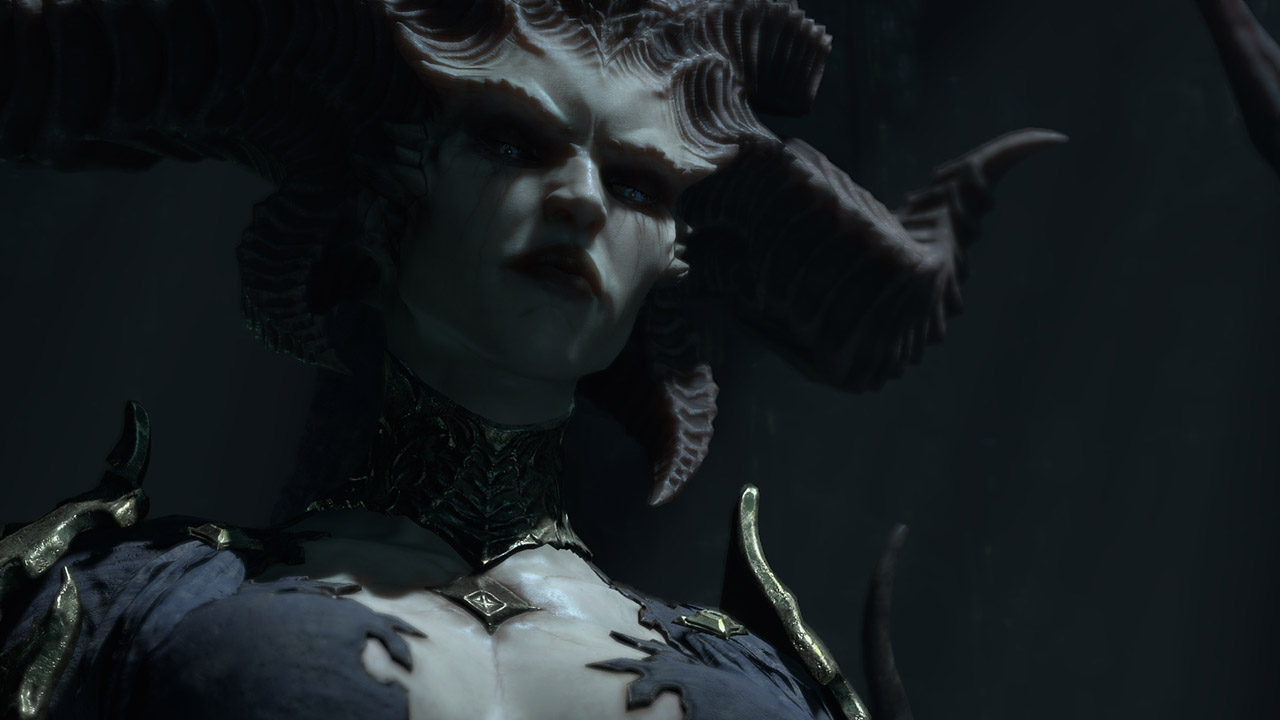
The look my mother gave 8 year old me when I asked for a Mars bar at the supermarket checkout
The narrative of the game revels in its despair, hopelessness, and always being just one step behind. Despite a history of RPG’s that tell you you can make a difference by being clever, this is a tale of destined fates and bitter outcomes. This is a testament to the writing of Lilith as being a bit more than a cackling villain, with wicked themes of relationships and deeper family ties that explain the motivations of these ancient, terrible beings that are ingrained in the history of Sanctuary. Following Lilith on her path becomes a point of rumination, and the questions you internalise aren’t readily answered – there is a lot more to consider than simply ME BASH EVIL LIZARD like in previous games. This gets further highlighted by the supporting cast of human characters, each of which add to the shades of grey that make your search for the black and white of the situation so much more difficult. One of the games’ earliest characters dropped a massive redemptive arc that actually surprised me – I had them easily pegged as a secret villain. And this took place in the very first act of the game, forever shifting my expectations of my B-listers moving forward.
It helps that player choice is not wholly played off as fly-by gimmick within the game. Initial impressions did taint these expectations, with an early choice quickly revealed to do little than change dialogue – but as the stakes become a great deal higher as you approach the final act, you feel like far more than a spectator of a larger story. Prior games had these fated outcomes that painted the protagonist as a key player from the very start, but Diablo IV revels in making you feel like a side piece – a pawn making a journey across a board. You are advancing the stories of those around you, and their experiences form the greater story that will eventually drag you uncomfortably into centre stage.
With all these strengths on display, it stands to question why the game needed to sully itself with both a battle pass and in app purchases. Of course, the question is rhetorical – post-release revenue streams are like catnip to the “business-mans” – but the amount that Blizzard had to gain from dropping a stellar gaming product that didn’t rely on such things was monumental. Usually, I am a large proponent of the “don’t care, doesn’t affect me” approach when it comes to somewhat-harmless in-game shops, but this particular implementation feels so masterfully pointless that you question how it came to be included at all. Offering cosmetic looks for chicken-scratch after developers have stated they are no more interesting than free drops within the game world feels puzzling – and injecting a ‘need-to-play’ loop via a Battle Pass simply betrays the far more natural personal desire to play that comes from the game simply being fun and engaging on its own merit. The shopfront’s inclusion within the game is quietly tucked away, in a non-intrusive way – it almost captures the same energy as that awkward neighbour that always wants to talk to you about cricket; even though you made it clear long ago that you have zero interest in the bat and ball sport. You quietly and quickly move past each other, getting back to the task at hand and immediately forgetting the encounter.
I am no economist, but I do find myself wondering how the math might look if you were to compare the theoretical profit loss from all those that refuse to engage with the product due to the presence of these features, versus the long term revenue gained from sporadic purchases moving forward. In the end I rub my temples, frustrated and annoyed that I need to once more argue for a product that is mechanically fantastic to experience – wondering which side of the Simpsons “Am I out of touch?” meme may represent me and my thoughts.
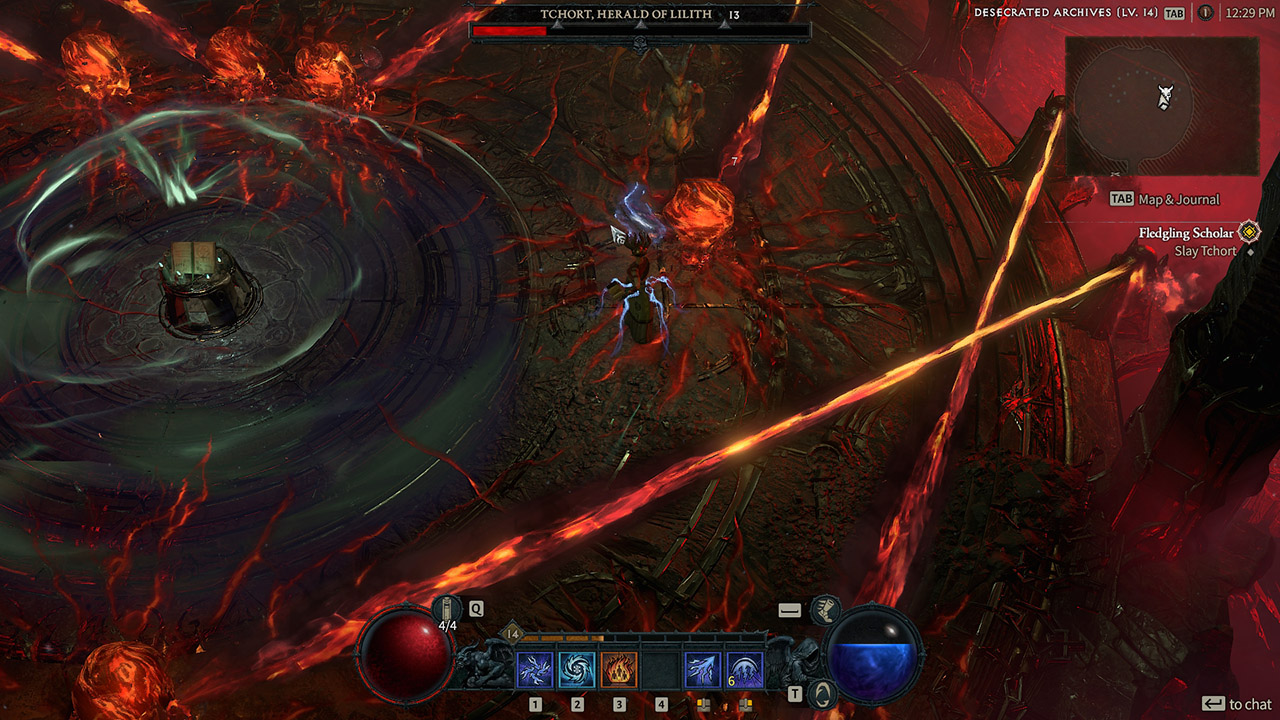
Ignore the chaos, everything is going entirely to plan
Final Thoughts
Diablo IV is a triumphant example of what can come from a group of passionate people working on something they deeply love. Its hauntingly beautiful audio design and incredibly detailed visuals work to elevate a rich and varied gameplay experience that embodies a massive step forward for the Diablo series as a whole. It is a title that feels justified in asking for a full price purchase, and delivers a whole and excellent product that could serve as an example of how modern games can be allowed to breathe without hanger-on revenue streams. Only it has TWO of those hanger-on revenue streams uncomfortably bolted to the side of it, every bit as malformed and putrid as the enemies that populate its world.
Reviewed on PC // Review code supplied by publisher
Click here for more information on WellPlayed’s review policy and ethics

- Blizzard Entertainment
- Blizzard Entertainment
- PS5 / PS4 / Xbox Series X|S / Xbox One / PC
- June 6, 2023



Known throughout the interwebs simply as M0D3Rn, Ash is bad at video games. An old guard gamer who suffers from being generally opinionated, it comes as no surprise that he is both brutally loyal and yet, fiercely whimsical about all things electronic. On occasion will make a youtube video that actually gets views. Follow him on YouTube @Bad at Video Games





